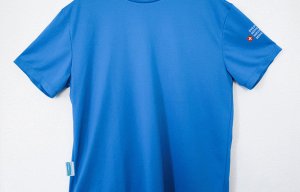
OceanSafe claims Design Prize Switzerland
Making clothing more practical, communicative, functional, and protective is a fundamental idea when developing smart textiles.

31st July 2018
Innovation in Textiles
|
Albstadt
Making clothing more practical, communicative, functional, and protective is a fundamental idea when developing so-called intelligent textiles, Groz-Beckert, a leading provider of industrial machine needles, reports.
Integrating sensors, electrically conductive yarns, or other unusual materials when manufacturing smart textiles creates great challenges for stitch-creating components. Groz-Beckert provides needles and system parts for a number of ambitious technologies and collaborations to develop and implement new ideas.
Research into wearable technology began to draw interest over 30 years ago. Certain smart textiles have come into the market over the years, particularly in the areas of medicine and sport. Nevertheless, these smart textiles are not yet as widespread or have come into our everyday lives as one would assume under such conditions. In an attempt to change this situation, Germany's Federal Ministry for Education and Research began an initiative in May 2018 to promote “materials for intelligent (smart) textiles”.
The promotional campaign combines the initiatives From Material to Innovation and Innovation for Tomorrow's Production, Services and Work. Forty-four countries within and outside Europe are participating in the campaign. But the central focus is not just cooperation over country borders; interdisciplinary cooperation also plays an important role. The close collaboration of companies and public research institutions is at the core of this enterprise and will ensure a safe and quick move to industrial application.
In addition to the problem that developing intelligent textiles and integrating them into our everyday lives requires an intersection of multiple disciplines such as textile manufacturing, electronics, and IT, as well as research and industry, there is also the matter of how intelligent functions can be integrated into the textile without factors that could disturb the wearer, e.g. batteries.

Many smart textiles already available on the market work via the integration of conventional mobile devices. However, these inflexible components oftentimes limit the functionality and user-friendliness of the textiles and present the wearer with a real problem, for example when cleaning. Flexible or printed components as well as special yarns, which are already being used in medicine, offer an alternative here.
Smart textiles are trend-setting in a number of ways. Their functionality means they can make a significant contribution to sustainability, for example in medicine by treating wounds in a manner that saves resources, or in everyday life when the power needed for various devices and functions can be carried directly on the body or created via solar energy.
Knitted muscles represent another, even more revolutionary idea. Swedish researchers are examining the potential of textile exoskeletons. This refers to textiles that contain conductive materials that contract or loosen when receiving stimulus. This can not only increase bodily performance in sports or professional life, but also improve the mobility of disabled or even paralysed people.

Researchers from the University of Washington were recently successful in developing an intelligent textile that works without any external power source, meaning it can be washed and ironed: a standard shirt that functions as data storage. A conductive yarn was used for this purpose, which is already used in gloves to operate touchscreens, for instance.
By magnetising the yarn in the shirt sleeve, the researchers were able to integrate an access code used to access security zones. Doors can be opened by moving the sleeve in front of the control panel. Data saved in the textile by polarising the conductive yarn can be read with a magnetometer. With this technology, people will be able to carry large amounts of data directly on their bodies.

Business intelligence for the fibre, textiles and apparel industries: technologies, innovations, markets, investments, trade policy, sourcing, strategy...
Find out more